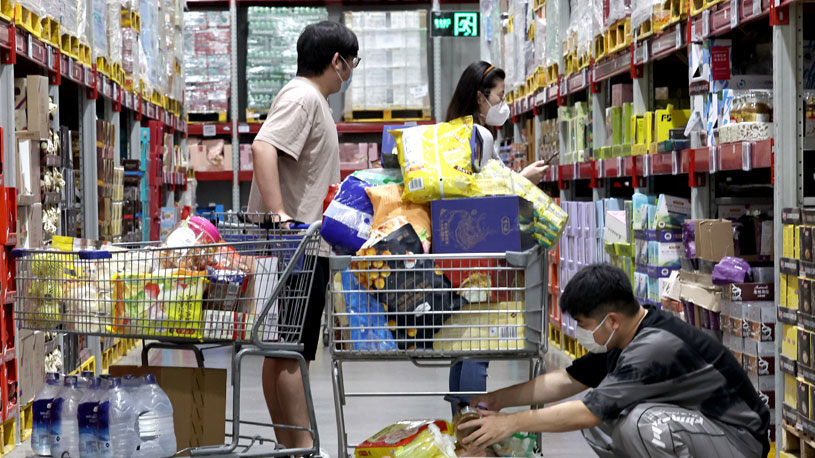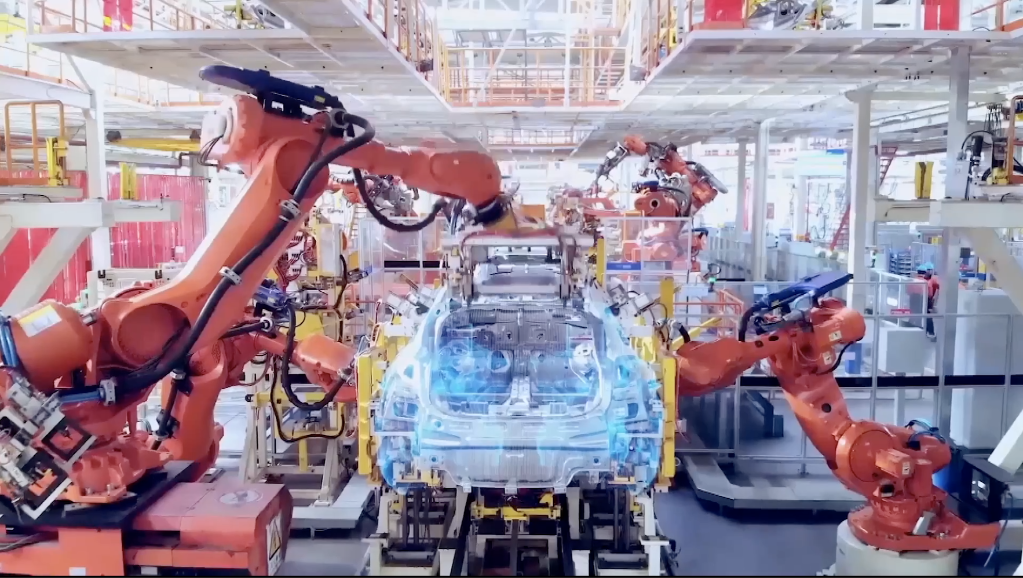*The heinous figure is greater than the total number of Americans killed on the battlefields of two World Wars, the Vietnam War and the American War of Independence combined and accomplished in a time span shorter than any of the wars alone.
*Behind Washington's ignorance of science is an ingrained disregard for human lives.
*The United States must draw lessons from this primarily manufactured American tragedy.
WASHINGTON, May 13 (Xinhua) -- In the perplexing early weeks of 2020 when the novel coronavirus was already showing signs of engulfing the entire world, the White House predicted in April that year that the virus would kill at least 100,000 to 240,000 Americans in the best-case scenario.
That best-case scenario never came to pass. Twenty-seven months after confirming its first case of COVID-19 infection, the United States reached a soul-crushing milestone on Thursday as its death toll crossed 1 million, according to a statement by the White House early the day.
The heinous figure is greater than the total number of Americans killed on the battlefields of two World Wars, the Vietnam War and the American War of Independence combined and accomplished in a time span shorter than any of the wars alone.
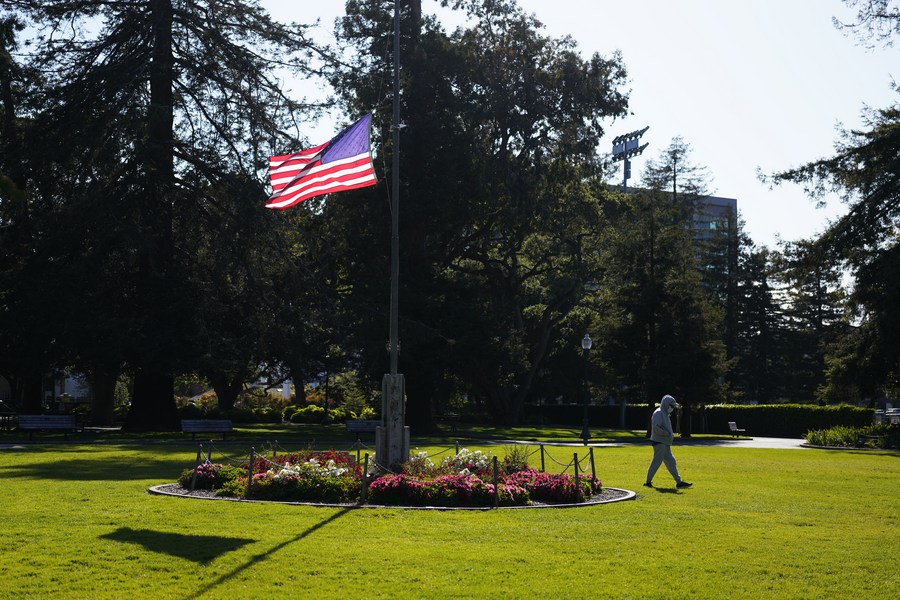
A U.S. flag flies at half-mast in the Central Park in San Mateo, the United States, on May 12, 2022. (Xinhua/Wu Xiaoling)
OVERCONFIDENCE KILLS
During his 2020 election campaign, then Democratic Party presidential nominee Joe Biden unleashed scathing attacks on then President Donald Trump's management of the COVID-19 campaign.
Surely, Trump was perniciously overconfident that the disease would "miraculously goes away." But, as Politico commented, Biden, like Trump, "has been too rosy, only to see extensive spread and high death counts on his watch."
On National Day of Prayer in early May, Biden issued a statement that defined the current stage as "a moment of renewal -- of lives saved, new jobs created, and new hope for rebuilding America."
It was not the first time Washington painted a rosy picture that conflicts with the harsh reality in its fight against COVID-19.
In the middle of last year, when hundreds of Americans were still dying of the disease every day and a more infectious variant of the virus, Delta, was spreading rapidly at home and abroad, Washington rushed to urge Americans to celebrate the Fourth of July and "independence" from COVID-19.
In an article that chronicled what happened over the next four weeks inside the U.S. government's scramble to curb the Delta surge, The Washington Post reported that the surge of Delta cases that overran the country forced Biden and his top aides and Cabinet members to reckon with their overconfidence.
"The administration had been caught flat-footed -- and then took weeks to enact a plan in an attempt to catch up," the Post article concluded.
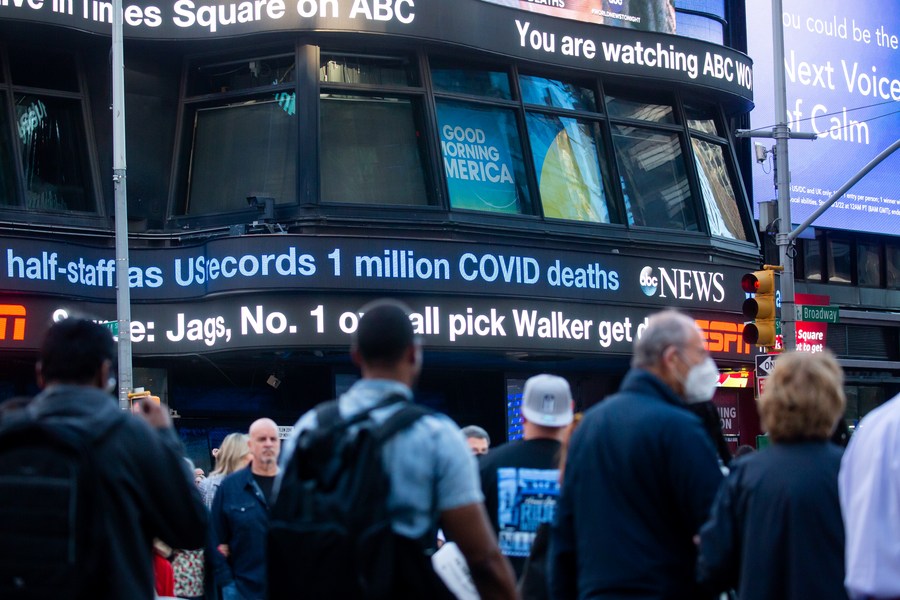
Pedestrians walk in front of a Times Square news ticker in New York, the United States, on May 12, 2022. (Photo by Michael Nagle/Xinhua)
On March 1, in his first State of the Union address since taking office, President Biden proudly claimed that "thanks to the progress we've made in the past year, COVID-19 no longer need control our lives."
In fact, the deadly pathogen was killing over 1,900 Americans and infecting over 46,000 during the same day the president delivered the speech. And the so-called "progress made last year" amounted to 34.6 million infections and nearly half a million deaths, with COVID-19 ranking as one of the top three leading underlying causes of death in the country.
Nonetheless, the U.S. administration was hell-bent on persuading its people to "move on." The Centers for Disease Control and Prevention (CDC) issued new mask guidelines just a few days before Biden's speech, stating that most Americans are not required to wear masks.
The public begs to differ. A Washington Post-ABC News poll found that -- despite the glowing picture painted by politicians -- most Americans still believe the virus is not entirely under control yet and that some restrictions should be maintained.
Despite the public concern, government officials "are trying to project this nonchalance that we are back to normal," said Gregg Gonsalves, an infectious disease expert at Yale University, in an interview with Politico.
"It gives the impression that they don't care and infections don't matter ... This is all about political expediency and optics more than anything else, and it's entirely depressing," Gonsalves said.

Pedestrians pass a sign advertising a COVID-19 testing site in New York, the United States, on May 12, 2022. (Photo by Michael Nagle/Xinhua)
RACE GAPS IN DEATH
No one expected Leonder Jerome's condition to deteriorate so quickly after contracting COVID-19. Jerome was placed on life support for pneumonia complications after only a few weeks of feeling unwell.
Doctors advised his sister to begin making end-of-life plans because his brother had only a 3 percent chance of survival.
The doctors weren't bluffing. According to official data, Black residents like Jerome, facing a vaccine shortage and less access to health insurance, accounted for an overwhelming majority of the deaths in the region where Jerome lives.
What Jerome experienced epitomizes America's dreadful fight against the pandemic: a staggering death gap between rich and poor, White and Black.
COVID-19 mortality among the working class was five times higher than that of college graduates. If all racial and ethnic populations had experienced the same mortality rates as college-educated non-Hispanic whites, racial and ethnic minorities would have seen 71 percent fewer deaths.
According to a CDC study, during the Omicron wave, Black adults were hospitalized at nearly four times the rate of white adults, with underlying medical conditions or a lack of access to health care being the leading causes.
"The COVID-19 pandemic has exposed the cracks in our systems and laid bare the underlying inequities that have existed in the United States for generations -- in our health care system, our economy, in education, and in our justice systems," U.S. House Budget Committee Chair John Yarmuth once said at a hearing on health and wealth inequality in America.
Jerome finally recovered after three months of treatment in different hospitals, which doctors described as a "miracle."
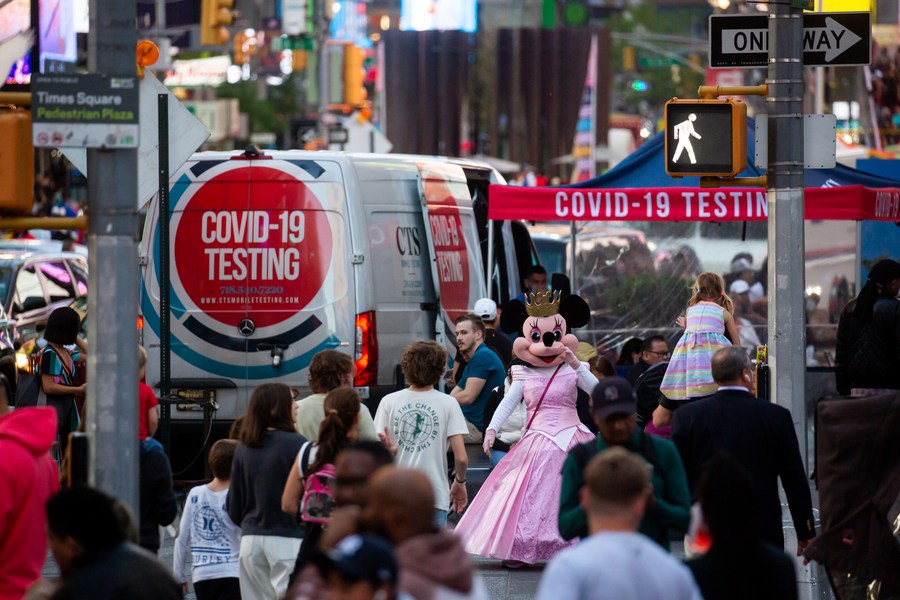
A COVID-19 testing site is seen on the Times Square in New York, the United States, on May 12, 2022. (Photo by Michael Nagle/Xinhua)
However, miracles don't happen often. During the three months of Jerome's hospitalization, tens of thousands of Black Americans lost their lives.
"Race doesn't strongly shape if an individual gets infected with COVID-19 ... But race does relate to how severe the disease is and if you die from it," Ohio University researcher Berkeley Franz said after examining the relationship between systemic racism, residential segregation and racial/ethnic disparities in COVID-19 deaths in the United States.
"Racial disparities are baked into American institutions," said Franz.
AN UNDERCOUNTED TOLL
After pulling himself together following his wife's death from COVID-19 vaccine complications, Stan Thomas was told that he was not eligible to apply for government subsidies to help with the burial costs because her death certificate didn't list COVID-19 as the cause of death.
Thomas's plight illustrates how the disease's offshoot deaths have been forgotten.
Researches have found that the actual number of deaths from the pandemic in the United States is far more staggering.
A study by Boston University found that for every 100 deaths directly attributed to COVID-19, there were another 20 deaths not attributed to the disease, which means that the U.S. death toll from the pandemic has been underestimated by at least 20 percent.
"Our findings suggest that the impact of the COVID-19 pandemic on mortality has been substantially underestimated in many communities across the U.S.," said lead author of the study Andrew Stokes, assistant professor at Boston University School of Public Health.
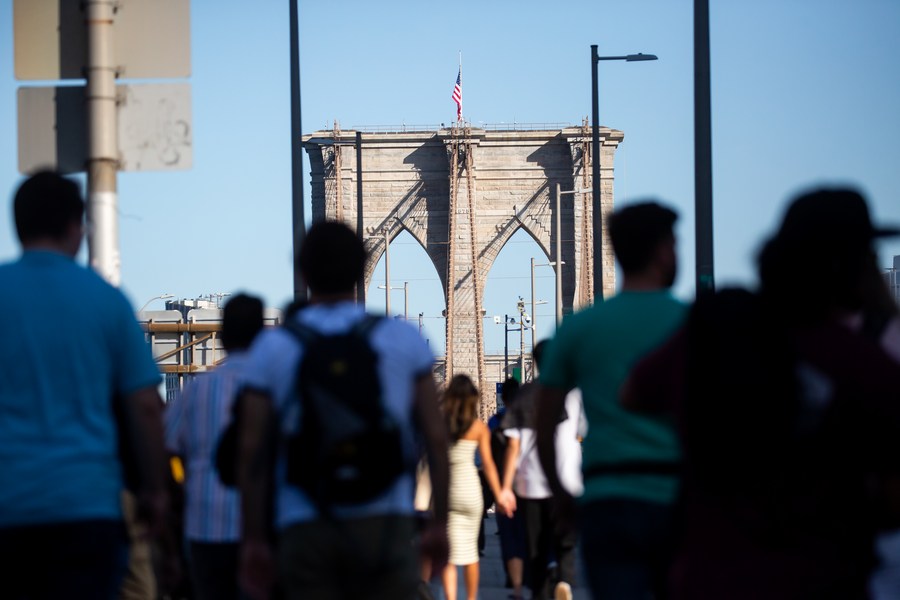
A U.S. flag flies at half-mast atop the Brooklyn Bridge in New York, the United States, on May 12, 2022. (Photo by Michael Nagle/Xinhua)
Elsewhere, epidemiologists from Georgetown University found that between Jan. 3, 2020, and Sept. 26, 2021, the excess mortalities associated with COVID-19 totaled 895,693; during the same period, 710,999 COVID-19 deaths were reported by U.S. government.
"In other words, during this period the U.S. experienced 26 percent more COVID-19 deaths than reported as such," said the research.
The World Health Organization also estimated in a report earlier this month that in 2020 and 2021, the United States recorded more than 930,000 excess deaths, while only 820,000 COVID deaths were officially recorded over the same period.
"I think there's no doubt... that we are and have been undercounting," top U.S. pandemic advisor Anthony Fauci admitted.
There is a substantial variation in factors leading to the underestimation.
According to Stokes, some counties in the South and West are more likely to underreport pandemic deaths. Deaths also tend to be missed due to health system collapses, test shortages and less access to health insurance, and some undercounting may even be politically motivated.
"When we underestimate, we may underinvest," Samira Asma, the World Health Organization's assistant director general for data, analytics and delivery for impact was quoted as saying by The New York Times. "And when we undercount, we may miss targeting the interventions where they are needed most."
PAINFUL LESSONS
The United States must draw lessons from this primarily manufactured American tragedy.
First and foremost, science should be seen as the key to winning this difficult COVID battle. Since the pandemic's outbreak, scientists have played an essential role in combating the previously unknown virus.
Letting politics override science, especially at the early stage of the pandemic, led to the tragedy playing out in the United States, the country with the world's most cutting-edge medical technology and well-equipped health system.
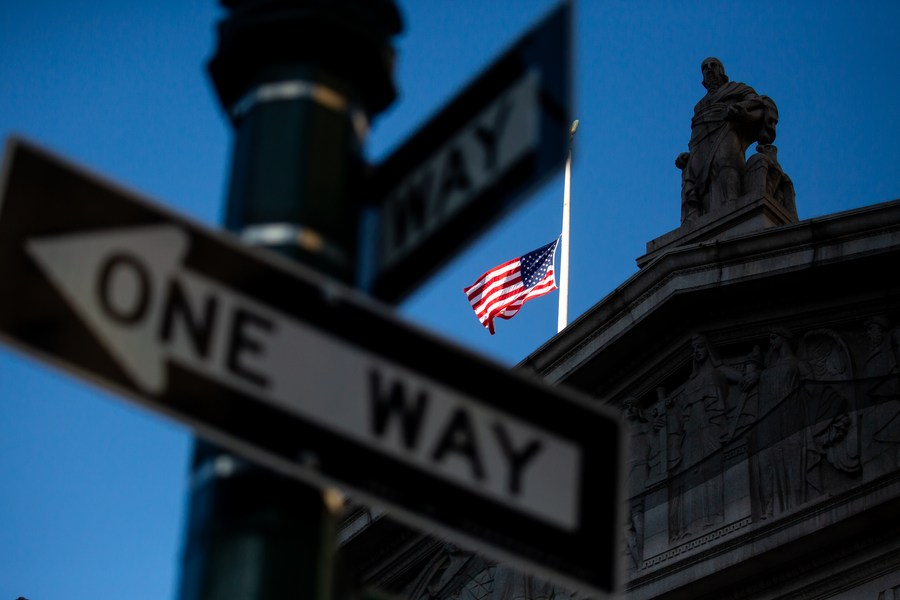
A U.S. flag flies at half-mast atop the New York County Supreme Court in New York, the United States, on May 12, 2022. (Photo by Michael Nagle/Xinhua)
Defeating the pandemic requires global cooperation, but Washington continues to reside in a vacuum -- at the expense of American lives.
"The U.S. government has made international science harder right when it needs it the most," John P. Moore, a professor of microbiology and immunology at Cornell University's Weill Cornell Medicine, said in an opinion piece in The Washington Post.
"The U.S. government has thrown up hurdles that make collaborating with researchers from other countries a bureaucratic hassle," he argued, while stressing that now is the time for the world to work "together to end the COVID-19 pandemic -- and prevent the next one."
Behind Washington's ignorance of science is an ingrained disregard for human lives.
This explains why Washington believes it has the moral high ground to level baseless accusations against other countries' anti-COVID approaches, even as COVID deaths in the United States cross one horrific milestone after another.
Furthermore, the utter failure of the United States' anti-COVID campaign brings another lesson: only governments that truly "put people's lives first" can win the public's support.
A recent report by the Pew Research Center found that 60 percent of Americans describe the job the White House is doing responding to the pandemic as only "fair or poor," confirming that most Americans aren't pleased with Washington's ineffective anti-COVID strategy.
"Nearly two years after the coronavirus outbreak took hold in the United States, Americans are increasingly critical of the response to COVID-19 from elected officeholders and public health officials," concluded the report.
Sadly, despite a million deaths and counting, no one is likely to be held accountable for Washington's mishandling of the disease and its failure to save lives. Americans, it seems, have no other choice but to learn to live with the virus, as well as the pain and suffering that follows. (Video reporters: Liu Chang, Li Cheng, James Asande, Zack, Hu Yousong; video editors: Hong Liang, Li Qin)■





